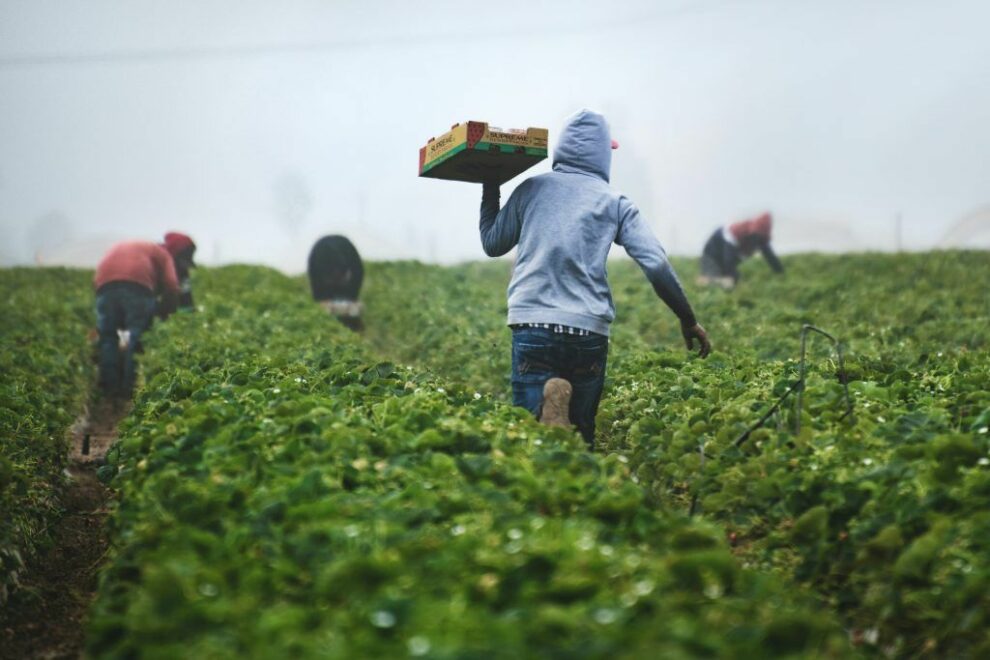Agriculture has been the mainstay of human civilization for thousands of years, providing the food and resources necessary for societies to thrive and develop.
One of the key practices that has evolved over time to improve agricultural productivity and sustainability is crop rotation. This ancient agricultural technique involves the successive planting of different crops in a specific order on the same plot of land.
By understanding and implementing crop rotation, farmers can improve soil health, reduce pest and disease outbreaks, and increase crop yields.
Historical background of crop rotation
The practice of crop rotation dates back to ancient civilizations. The Romans and Chinese were among the first to document crop rotation techniques. In the Roman era, farmers used a three-field system, where the land was divided into three parts: one for winter crops, one for spring crops, and one left fallow to recover. This method not only optimized land use, but also improved soil fertility.
During the Middle Ages in Europe, the three-field system was widely adopted. This system involved rotating between wheat, barley and a period of fallow, allowing for continuous production without depleting the soil. The introduction of legumes, such as beans and peas, into crop rotations further improved soil fertility by fixing atmospheric nitrogen through symbiotic relationships with rhizobial bacteria.
Principles of crop rotation
Crop rotation is based on several fundamental principles intended to maintain soil health and prevent agricultural problems. Firstly, diversity in crop selection is crucial, as different crops have varied nutritional requirements and pest vulnerabilities. By rotating crops, farmers can avoid depletion of specific soil nutrients and break the life cycles of pests and diseases.
Another essential principle is the alternation of plant families. Crops from different botanical families are rotated to disrupt pest and pathogen habitat, helping to reduce infestations. For example, rotating between cereal crops, such as wheat and corn, and legumes, such as beans and peas, can improve soil health and minimize pest pressures.
Additionally, soil fertility management is a key aspect of crop rotation. Legume crops, which fix nitrogen, are often included in rotations to enrich the soil with this essential nutrient, thereby reducing the need for synthetic fertilizers and promoting more sustainable agricultural practices. This soil enrichment contributes to a more fertile and productive environment for subsequent crops.
Finally, cover crops and green manures play an important role in crop rotation and modern agriculture. Cover crops, such as clover and rye, are planted between main crops to protect and enrich the soil. These crops can prevent erosion, suppress weeds, and add organic matter to the soil when incorporated as green manure. Thus, by integrating these principles, crop rotation becomes an effective strategy to improve sustainability and agricultural productivity.
Benefits of crop rotation in sustainable agriculture
The practice of crop rotation offers numerous benefits that contribute to the sustainability and productivity of agricultural systems. One of the most notable benefits is improved soil health, as continued monoculture can lead to soil degradation, nutrient depletion, and increased vulnerability to pests and diseases. Crop rotation helps mitigate these problems by diversifying the types of crops grown, which in turn supports a balanced soil nutrient profile.
Legume crops, by fixing atmospheric nitrogen, enrich the soil with this essential nutrient, reducing the need for synthetic fertilizers and promoting sustainable agricultural practices. Additionally, the root systems of different crops can improve soil structure, increase organic matter content, and promote beneficial microbial activity.

Another significant benefit is the management of pests and diseases, which are major challenges in agriculture. Monoculture creates a stable environment for pests and pathogens, allowing them to thrive and increase their populations over time. Crop rotation disrupts this cycle by introducing a variety of crops to which pests and diseases may not be adapted, thus reducing their prevalence. For example, root-knot nematodes, which affect a wide range of crops, can be controlled by rotation with non-host crops such as cereals.
Additionally, crop rotation is an effective strategy for weed control. Weeds compete with crops for nutrients, water and sunlight, reducing agricultural productivity. Different crops have varied growth habits, canopy structures, and planting times, which can suppress weed growth by altering the environment and making it less favorable for weed establishment.
Modern applications of crop rotation
Although crop rotation is an ancient practice, it is still highly relevant in modern agriculture. Advances in agricultural science and technology have provided farmers with more tools and knowledge to implement effective crop rotation strategies. For example, precision agriculture involves the use of technology to optimize agricultural practices based on specific site conditions. GPS-guided machinery, soil sensors and data analytics allow farmers to plan and implement crop rotations with greater precision. By monitoring soil nutrient levels, moisture content, and pest populations, farmers can make informed decisions about which crops to plant and when to rotate them.
Likewise, organic farming emphasizes the use of natural inputs and practices to maintain soil health and produce high-quality crops. Crop rotation is a fundamental principle of organic farming, supporting soil fertility and pest management without synthetic chemicals. Organic farmers often use diverse crop rotations, including cover crops and green manures, to increase soil organic matter and improve biodiversity.
Finally, climate change poses significant challenges for agriculture, including increases in temperature, changes in precipitation patterns, and more frequent extreme weather events. Crop rotation can help farmers adapt to these challenges by building resilient agricultural systems. Diverse crop rotations can improve soil health, increase water retention, and reduce vulnerability to pests and diseases. In this way, crop rotation continues to be an essential and adaptive practice in modern agriculture.
Challenges and considerations in the context of climate change
Although crop rotation offers numerous benefits, there are also challenges and considerations that farmers must address. In this sense, one of the main drawbacks is extreme climate variability. Droughts, floods and extreme temperatures affect the viability of certain crops and, therefore, rotation planning.
Additionally, climate change may alter the distribution of pests and diseases, making some traditional rotations less effective. This requires constant monitoring and the flexibility to modify rotations according to new phytosanitary conditions.
In conclusion, we see that, like any practice in any field, it offers benefits and also concerns, which are maximized in the face of the constant threat of climate change, a phenomenon that requires a joint and conscious effort on the part of all humanity.














Add Comment